Photographs have such a great power to provoke thought and transmit emotion by cleverly telling stories about people in front of and behind the camera. Sometimes they portray events that were inspiring, uplifting, or even unexpected and shocking. Pulitzer Prize Award-winning photographs often have a tendency to catch the attention of spectators for their critical and challenging content as well as provoking very different reactions.
Patiently waiting for the photo opportunity to present itself or having to hide the camera from angry mobs, helping to save people’s lives, or simply immortalizing the very moment of survival or death—that’s what many of these photographers encounter while documenting the events. Numerous great photographers each year submit their work for the Pulitzer Prize, which showcases and celebrates outstanding achievements in American journalism.
#1 1966 “Flee To Safety”
Another entry by a foreign photographer was the image of a South Vietnamese mother and children trying to swim across the river to escape the assault Operation Piranha. Once Kyochi Sawada’s picture won that year, he searched for the families in the actual photo and gave them half of the prize money.
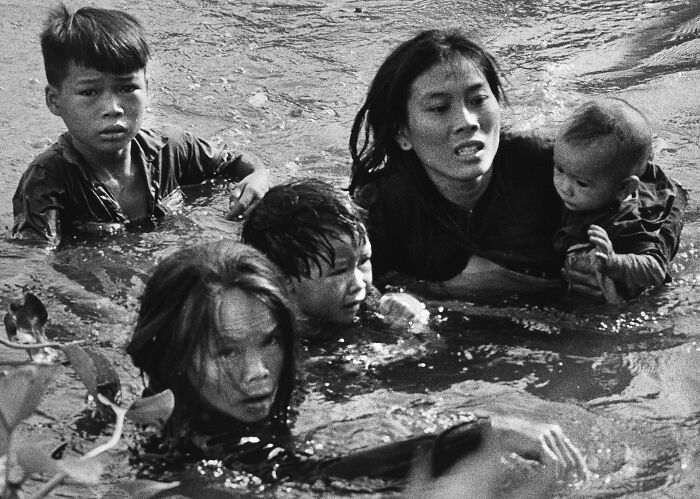
Image credits: Kyoichi Sawada
#2 1958 “Faith And Confidence”
An image of police officer Maurice Cullinane and two-year-old boy Allen Weaver during a parade in Chinatown, Washington, DC. The policeman had warned the young boy against getting too close to the dragons, and that’s when William C. Beall caught the conversation on film and the Pulitzer Prize Board called it “an appealing picture which made a profound impression on readers.”
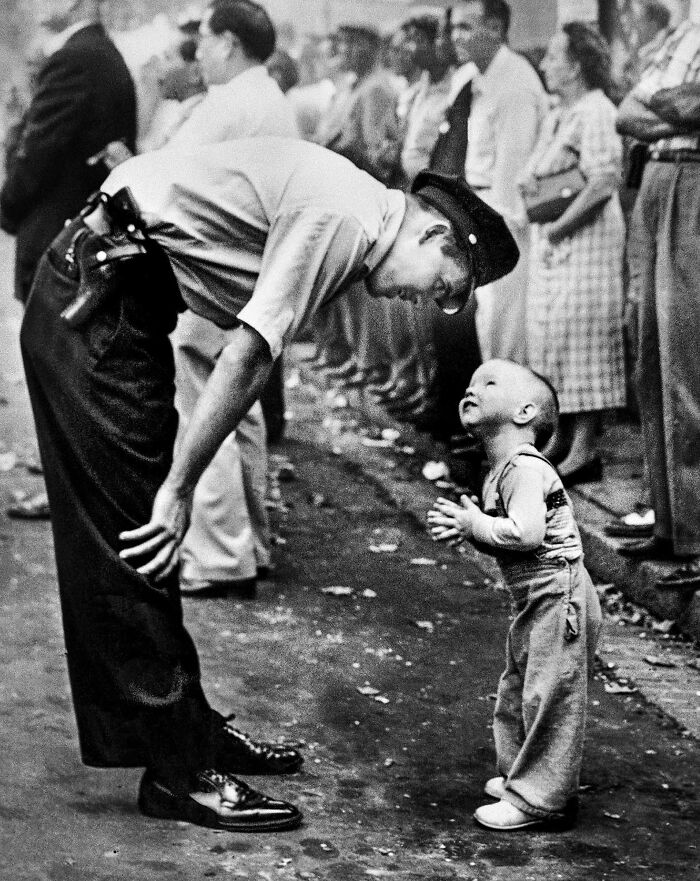
Image credits: William C. Beall
#3 1969 “Coretta Scott King”
A photo of Coretta Scott King and her daughter Bernice in a moment of grief during Martin Luther King Jr.’s funeral in April, 1968 was taken by Moneta Sleet Jr. The day before the assassination, Martin Luther King Jr. assured his supporters that he was not afraid to die and that racial oppression could be defeated in the future.
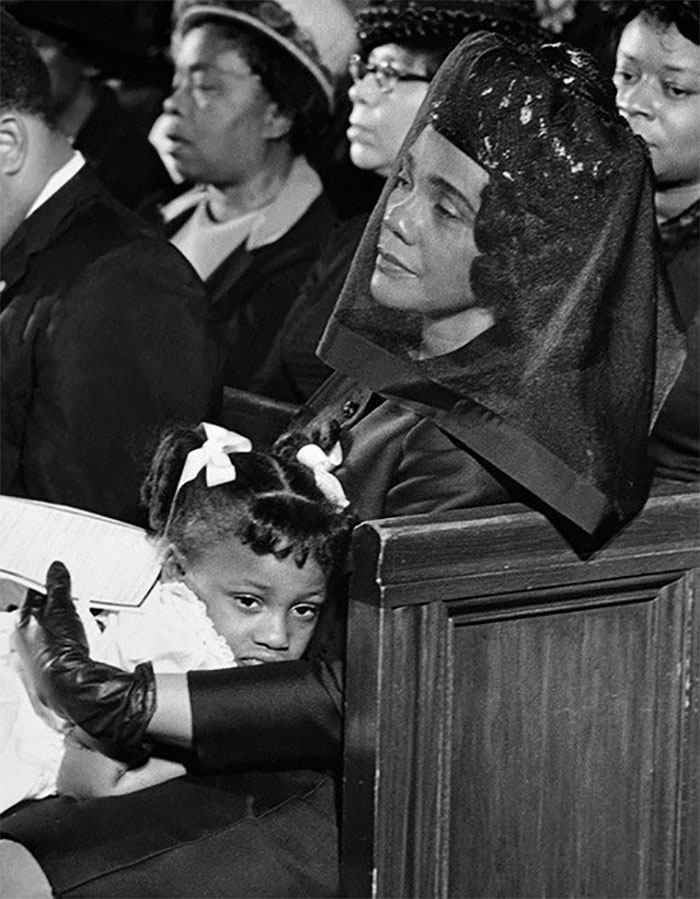
Image credits: Moneta Sleet Jr.
#4 1944 “Homecoming.”
To take the “Homecoming” photo, Earle Bunker had to arm himself with patience for over 24 hours, waiting for the train that Lieutenant Colonel Robert Moore was coming back on after serving in WW2. Having been away from his family for 16 months, the soldier was reunited with his family and Bunker captured the very moment of it.
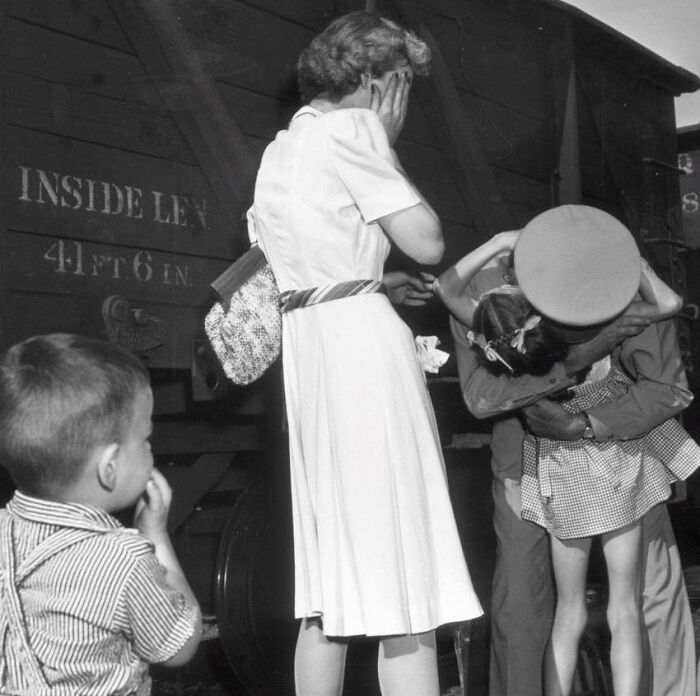
Image credits: Earle Bunker
#5 1951 “Flight Of Refugees Across Wrecked Bridge In Korea”
Max Desfor was on photographer’s duty travelling with the American frontline troops during the war between North Korea and South Korea. On December 4th, 1950, while driving around Pyongyang, he noticed a bombed bridge that had hundreds of war refugees trying to make it across to the other side of the Taedong river. It was very cold and Max recalls that he could barely press the shutter button because of the freezing temperatures.
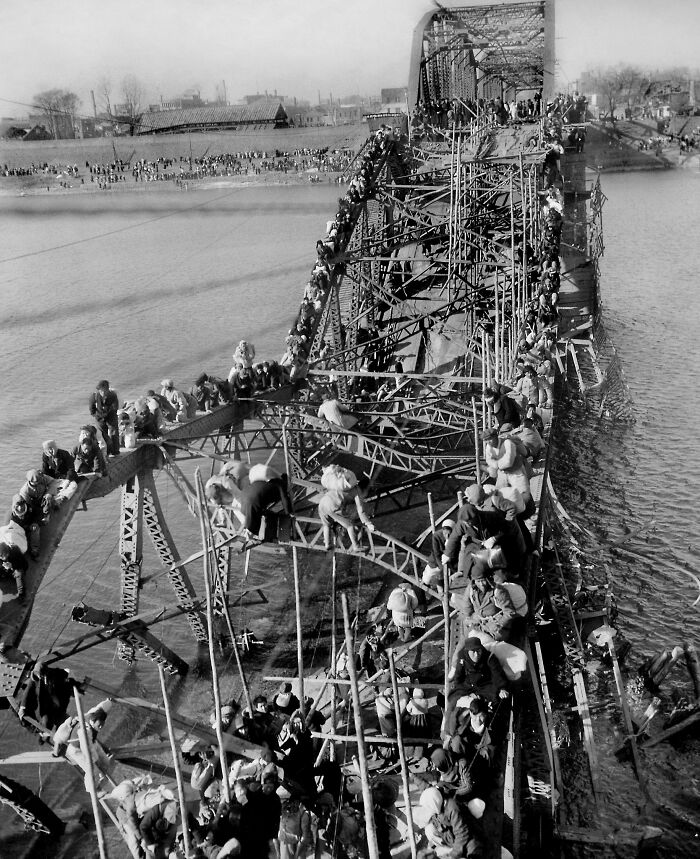
Image credits: Max Desfor
#6 1945 “Raising The Flag On Iwo Jima”
More than iconic, this image happened to be surrounded by controversy regarding its authenticity. It was taken by Joseph Rosenthal during the final stages of the Pacific War, showing US Marines raising the flag on top of Mount Suribachi, the island of Iwo Jima. And it was so difficult to reach the point that the photographers started to doubt whether it was even worth it. “As the trail became steeper, our panting progress slowed to a few yards at a time. I began to wonder and hope that this was worth the effort, when suddenly, over the brow of the topmost ridge, we could spy men working with the flagpole they had so laboriously brought up about quarters of an hour ahead of us.“.
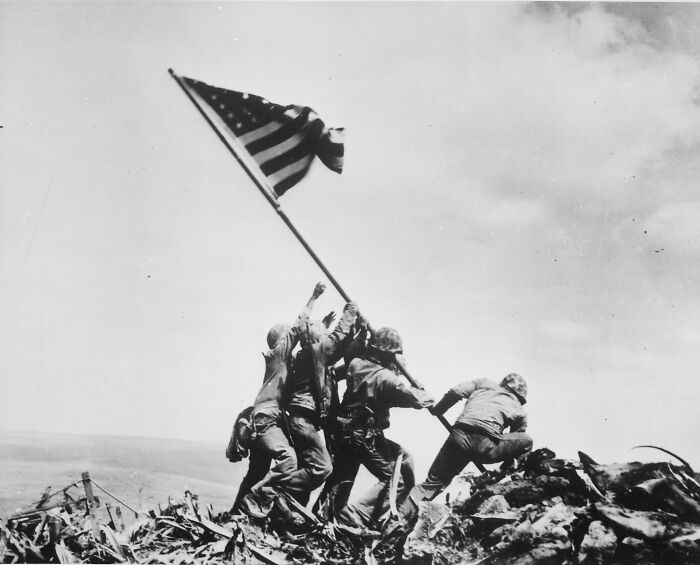
Image credits: Joe Rosenthal
#7 1955 “Tragedy By The Sea”
John L. Gaunt immortalized a tragedy of two parents by a rough sea realizing that they had just lost their child. The McDonalds were walking along the waves as their son Michael played nearby and crawled into the waves without them noticing.

Image credits: John L. Gaunt
#8 1949 “Babe Ruth Bows Out”
The first picture in the sports field was taken during the final baseball game of George Herman Erhardt (AKA “Babe Ruth”). Although he was one of many photographers present that day, where Nathaniel Fein succeeded the most was taking a photo that really captured the moment of Ruth wearing the number 3 shirt and using his baseball bat as a cane while the whole stadium cheered. Ruth passed away two months after the photo was taken.
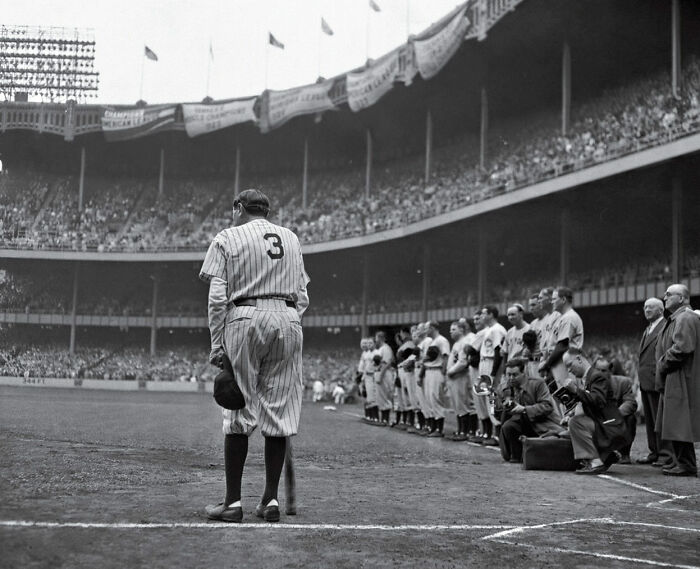
Image credits: Nathaniel Fein
#9 1943 “Water!”
The second winner of the Pulitzer Prize for Photography, Frank (AKA “Pappy”) Noel, took the award-winning picture of a seaman in a lifeboat stretching his arm out for water—Noel himself was in another lifeboat in the Indian Ocean as his ship was torpedoed.
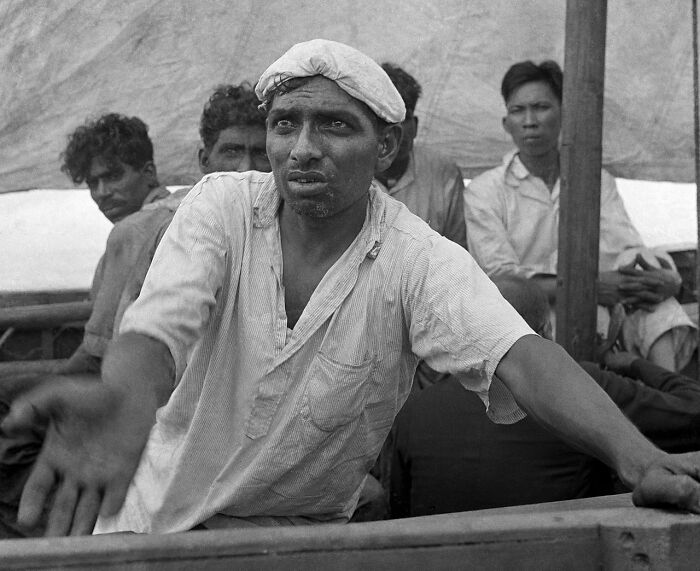
Image credits: Frank Noel
#10 1962 “Serious Steps”
The jurors were “impressed with the importance of thoughtful, significant pictures to illustrate the news.” This image taken during a meeting regarding the Cuban Crisis between JFK and Dwight D. Eisenhower was taken during the moment when the secretary said “no more photos” and Paul Vathis snapped two shots from behind.
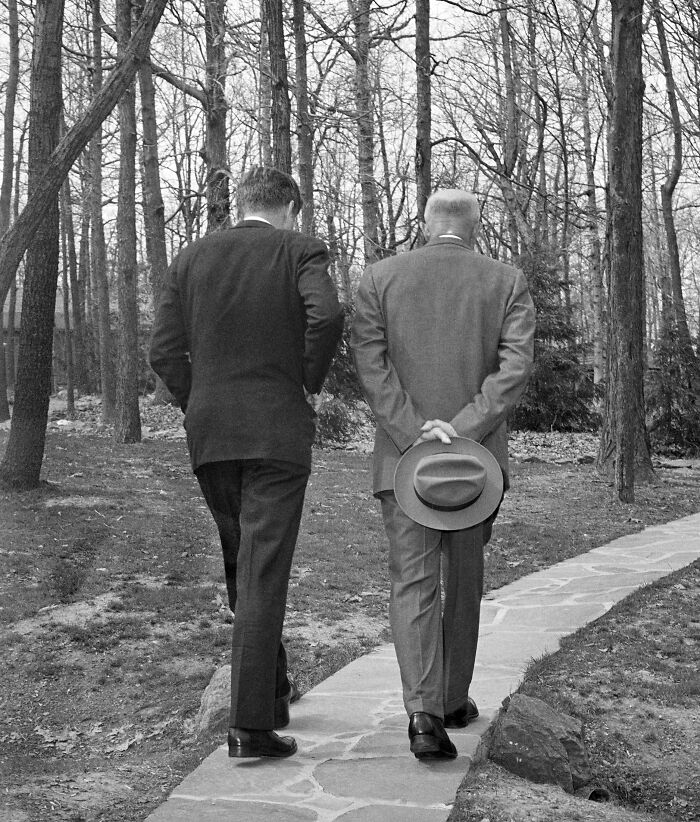
Image credits: Paul Vathis
#11 1967 “Shooting Of James Meredith”
During the March Against Fear in Mississippi in 1966, James Meredith, who was a civil rights movement activist, was attacked and injured by a sniper and Jack R. Thornell took the winning photo.
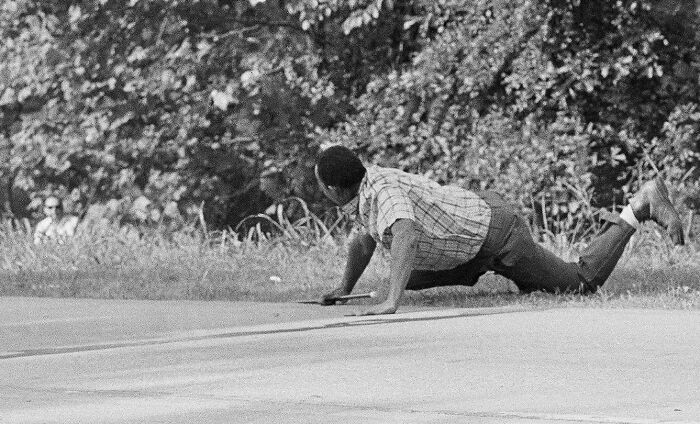
Image credits: Wikimedia Commons
#12 1952 “Johny Bright Incident”
The sequence of photos taken by John Robinson and Don Ultang highlighted the racial tensions involving African American player Johnny Bright during an American college football game in Stillwater, Oklahoma. The photographers deliberately set up the camera focusing on Bright following numerous rumors of him being targeted. In some way, they were lucky to capture the images as they only planned to stay through the first quarter of the game, and that’s when Bright got knocked down three times by the opposing team and eventually received an elbow blow that broke his jaw.

Image credits: John Robinson
#13 1953 “Adlai Stevenson”
William M. Gallagher had to kneel at the base of the platform in order to snap this picture of Democratic presidential candidate Adlai Stevenson—in particular, the hole in his right shoe. Apparently, after the image was published, Stevenson received an “avalanche” of shoes.

Image credits: William M. Gallagher
#14 1948 “Boy Gunman And Hostage”
The picture probably wouldn’t be so moving without its story of two 15-year-old boys—Ed Bancroft holding Bill Ronan as a hostage in an alley. As a robbery took place nearby, two policemen approached Ed asking about it. The boy pulled out a gun, shot one of the policemen, and took Bill as a hostage. Frank Cushing, the photographer, was on an assignment nearby, quickly assessing the best vantage point to take pictures of the events happening, which happened to be from a stranger’s rear porch.
- You Might Also Like: 43 “Obsolete” Bits Of Technology People Refuse To Stop Using
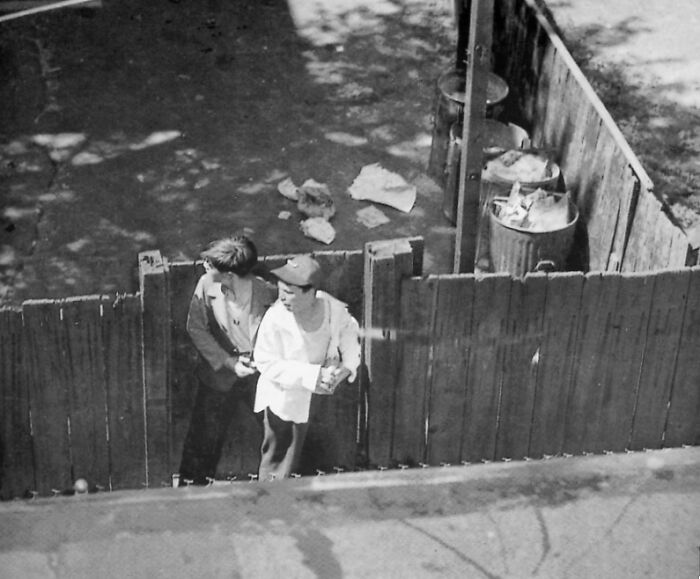
Image credits: Frank Cushing
from Bored Panda https://ift.tt/oxwsLrT
via IFTTT source site : boredpanda